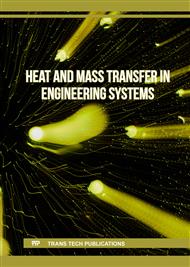p.113
p.125
p.143
p.157
p.163
p.171
p.181
p.187
p.193
Effect of Minor Fe, Si Contents on Microstructure and Property of 7085 Alloy during Fabrication Processes
Abstract:
Fe and Si elements can form non-dissolvable phases in Al-Zn-Mg-Cu alloys and furtherly affect the property of finished products while the influence of minor contents lacks sufficient investigations. In present work, 7085 alloy with different Fe and Si contents (named by LFS alloy, MFS alloy and HFS alloy as Fe and Si contents progressively enhanced) was investigated and corresponding microstructure and property during the whole fabrication were analyzed via OM, SEM and DSC observation and tensile property, fracture toughness and salty-spray corrosion property. The results showed that Fe-containing phase existed in as-cast microstructure of three alloys while part of Fe-containing phases of HFS alloy has Si element. After homogenization treatment, coarse eutectic phases had dissolved into the matrix while Fe-containing phase remained in the alloys. Similarly, Si element existed in some Fe-containing phases of HFS alloy. The order of area fraction of remaining Fe-containing phases for the three alloys was LFS alloy<MFS alloy<HFS alloy. After extrusion, Mg(Zn,Cu,Al)2 phase and Fe-containing phase possessed the majority, the former one was eliminated by solution treatment while the latter one had no obvious change. Under an unified aging treatment, the strength, elongation and fracture toughness were degraded with the increase of Fe and Si contents. Besides, the salt-spray corrosion property of HFS alloy was significantly inferior to LFS alloy and MFS alloy. This gave rise to a reference for controlling Fe and Si impurity of 7085 alloy for considering overall performance.
Info:
Periodical:
Pages:
171-178
Citation:
Online since:
May 2023
Authors:
Keywords:
Price:
Сopyright:
© 2023 Trans Tech Publications Ltd. All Rights Reserved
Share:
Citation:


